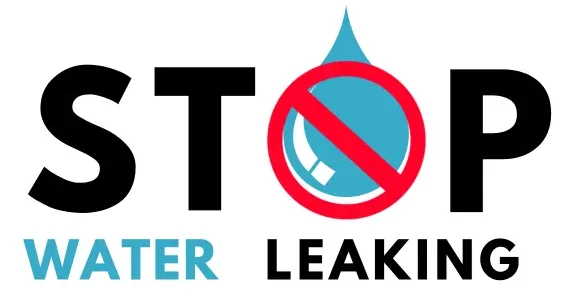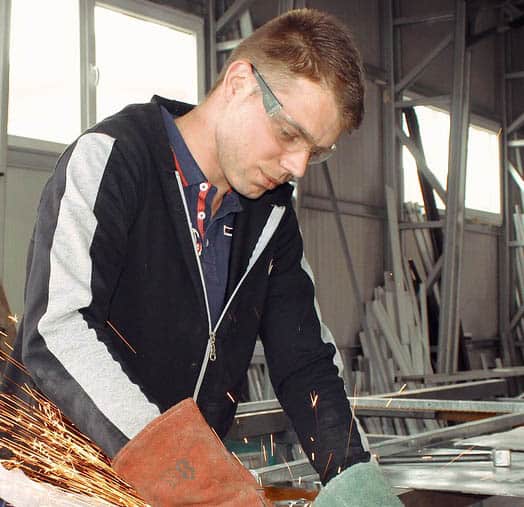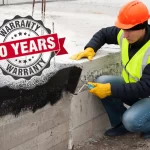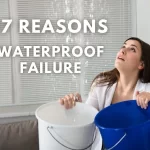Foundation is the basement of the structure. It should be strong and durable. With water, it can be damaged highly, and there are many ways to waterproof the basement for both new houses as well as already constructed houses. With my experience, I can line up step-by-step how to protect the basement from the water. Here I could find a few ways to protect the basement from the water.
I have searched with many sources as well as with my experience, waterproofing the basement with the basics of how it can happen. So I think it will be greatly useful for you to solve your problem. Here I could line up in detail.
Step 01: Check for the Basement Water Leaking
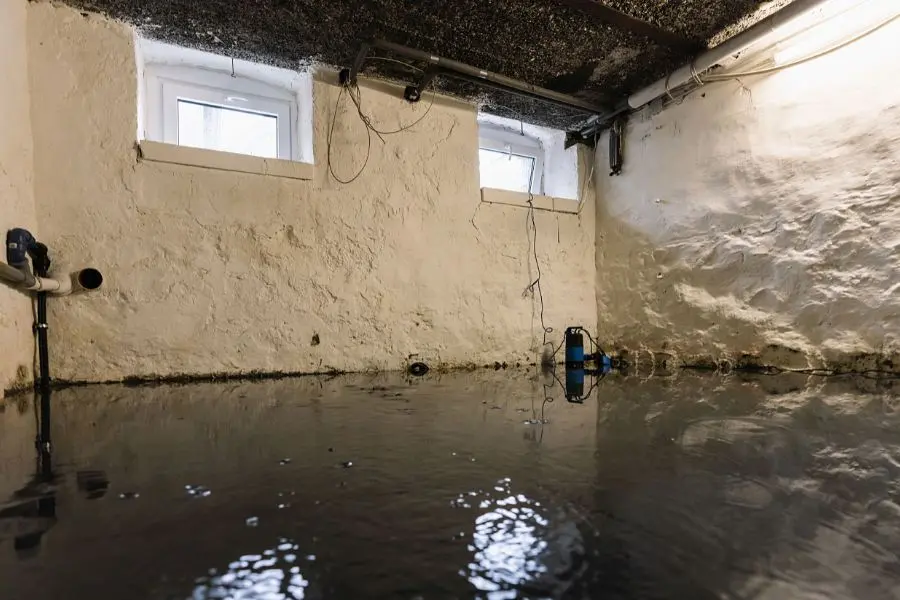
There are so many reasons for the water leaking inside the basement. Normally basement is 10-11 ft under the ground level. Due to this, it will be on the water table. Due to the water pressure, water will leak inside the foundation. In the preservation period, the effect is high due to the rising water table.
These are the following steps for the water leaking inside the basement. These are highly valid for concrete walls. But if the walls are brick, the situation is difficult.
Some times existing waterproof membrane can be damaged due to these 17 reasons
- Foundation Cracks
Due to the extra loadings foundation can be cracked. Through the cracking, water can be a leak inside.
- Entrapped Air Hole in the Foundation
When the concrete is pouring, it should be removed from entrapped air. The entrapped air will cause the water to leak due to low bonding.
- Joints of the Concrete
When the concrete stops and continues, the connection joint cannot be bonded well. Hence it should maintain good bonding.
- Due to Plumbing
Some AC and other plumbing cause the water leak inside through the plumbing holes. Hence it is essential to fully seal the entrance.
- Due to High Water Pressure
When depth is high, the water pressure also increased. Due to this, water will penetrate into the basement.
- Improper soils
There are types of soils. If the solid is saturated quickly (sandy soil), it will rapidly increase the inside water pressure.
- Poor Footings
When footings are too narrow or are not laid deep enough, they are susceptible to movement caused by soil erosion.
- Poor Guttering System
The gutter’s discharge is near to the foundation. It will be adding more water inside the soil.
After considering all the above basis, I could find various solutions and ways to solve all problems withstand.
If you have identified the reasons for the water leaking, you can apply one of the 10 Best Building Waterproofing Methods?
Below are the effective ways to waterproof the basement
Step 02: Build the Basement Interior Drainage System.
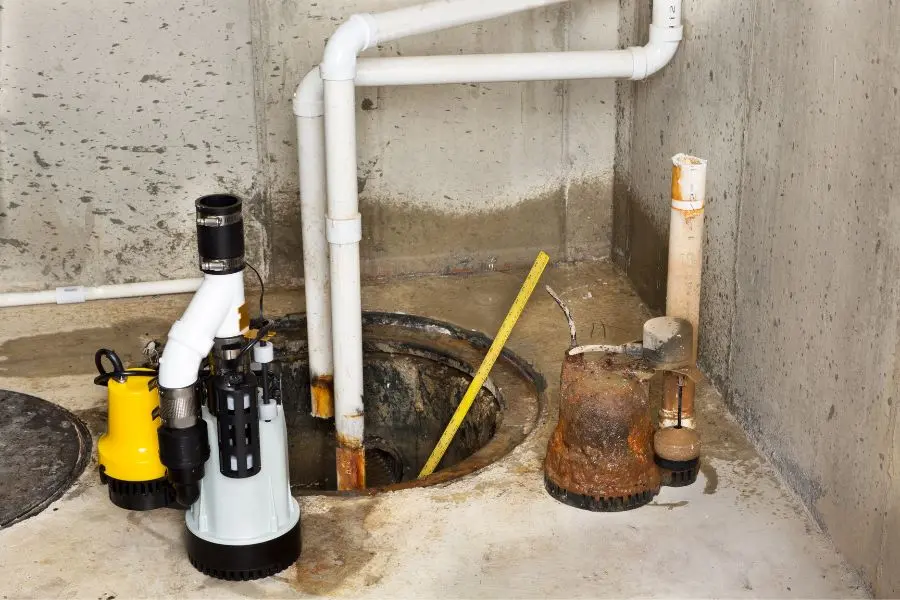
This is the most popular method for waterproofing the basement. Actually, here, we do not do any waterproofing applications. Just make way for the collecting of leaked water and the sump pump to the ground.
Considering brick walls, the seepage is high, and leaking water is collected at a high amount of rate. And also, for the concrete walls, water will be leaking through weep holes. Both these reasons will collect water inside the foundation.
These are the steps for the interior drainage system
- Create 1’ x 1’ drainage around the basement.
- Lay the 3” pipe with holes. (as water can go inside)
- Cover the pipe with small size aggregates.
- Lay the drain board on the aggregate
- Then lay the vapor barrier
- Create a sump pump system where the water pumps out.
- Concrete the system with required openings.
- Prepare the weep holes if need.
This is the interior drainage system; we can build it for both old and new houses also.
Step 03: Build the Basement Exterior Drainage System
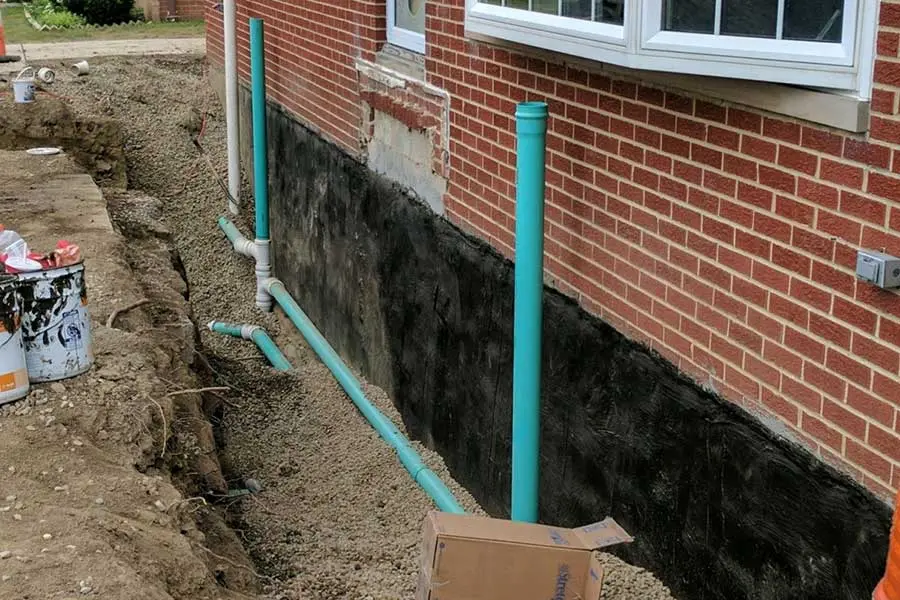
Above, we build an inside drainage system as well as we can create an outside drainage system also. In practically you may think it is not much useful. But it is. According to the site condition, this can be a suitable solution.
These are the steps for the exterior drainage system.
- Digging the trench around the basement outside. You can see the exterior of the basement.
- Clean the basement wall
- Apply the sealant to the wall outside
- Prepare the trench and level as water can flow.
- Lay the small size aggregate and lay 3” pipe
- Cover the pipe system with stones
- Apply the fabric barrier
- Build a sump pump system or free-flow way
- Cover up the excavation
Step 04: Build the Basement Interior Sealers
For the poured concrete foundations, cracks and pipe penetrations can leak the water inside the foundation. This kind of leaking can be fixed inside the sealant’s interior. Epoxies or urethanes can be used for this.
Epoxies are highly adhesive materials, and urthens can be pressure injected into the openings. For the masonry walls, this method will not be long-lasting.
Water will become inside the bonding joints and not be able to stop it with this kind of method.
Step 05: Apply Interior Basement Waterproofing
Frankly, it is difficult to stop major leaks with interior waterproofing. You can use many kinds of waterproofing coating to interior waterproofing. If there is small dampness and wetness, you can find a temporary solution.
But in due course, it will be increased. So I can suggest you move strong method.
Waterproofing can be done yourself or hire someone. But you should know about the waterproof warranty because membranes can fail at any time, and you will need to repair it. So warranty is very important. You should know what are the includes and excludes well.
Step 06: Apply Exterior Basement Waterproofing
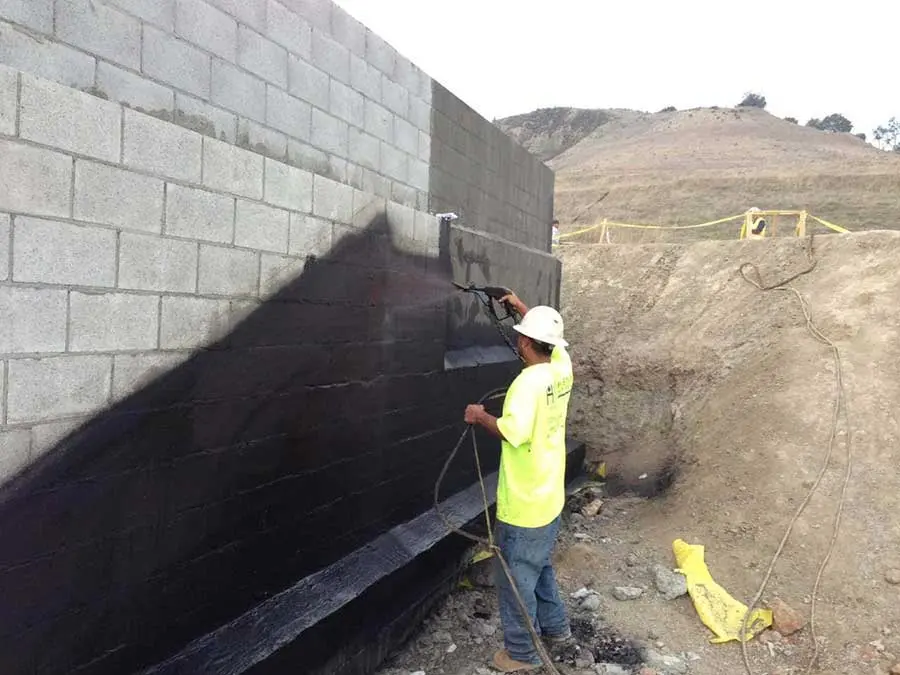
This is the one and only method that IBC approved without damaging the structure. This is the same as the exterior drainage system, as I mentioned above. In addition you can use polymer-based waterproofing products for the building, which is more long-lasting than building lifetime.
But for the new constructions, you can use a sheet membrane for the exterior waterproofing method. There are plastic membranes, as well as bitumen membranes, that can be used for exterior usage.
These can be directly sprayed on the wall and fast curing.
Step 07: Apply Basement Crack Injection
This is the same that we did above. But in-depth, we can discuss. Concrete is not a waterproof material. It is a water-resistant material with small leakages. Due to this waterproofing system is essential for every foundation project.
Epoxy crack injections are typically used for structural purposes, while hydrophobic or hydrophilic polyurethane injections are used to seal cracks to prevent penetration of moisture or water.
Step 08: Apply Crystalline Application
This is a type of liquid-applied system with cementitious coatings. When it is mixed with water and applied as a cementitious coating, the active chemicals cause a catalytic reaction which generates a nonsoluble crystalline formation of dendritic fibers within pores capillary tracts of concrete.
Step 09: Apply Integral Waterproofs
These are kind of admixtures that applies when the concrete is batching. The liquids powder or concrete admixture is designed to significantly reduce the permeability of the concrete.
The waterproofing admixture is a combination of admixtures, and it reduces the permeability of the concrete. It should be mixed when it is batching. A great solution
Advantages of the system
- Low cost
- Easy to use
- Impermeability
- Minimize porosity and honeycombs
- No surface preparation
If you are carefully paying attention to the waterproofing of the basements, you can understand there are ways that we can do at the beginning as well as after construction. So I can suggest you select the best way to waterproof the basement with durability. Whatever method you use, you must protect it. Drilling, hammering, and scratching should not be done. And also, due to the external loads, it can be damaged. When it is damaged asap, fix it. So it is the best way to protect the system every time.
Related Topics
- [7 Steps] – How to Waterproof the Balcony?
- Is Epoxy Waterproof? – [Best Option]
- How to Do Wood Waterproofing? – [07 Easy Steps]
- How to Waterproof the Water Tank? Concrete | Brick
